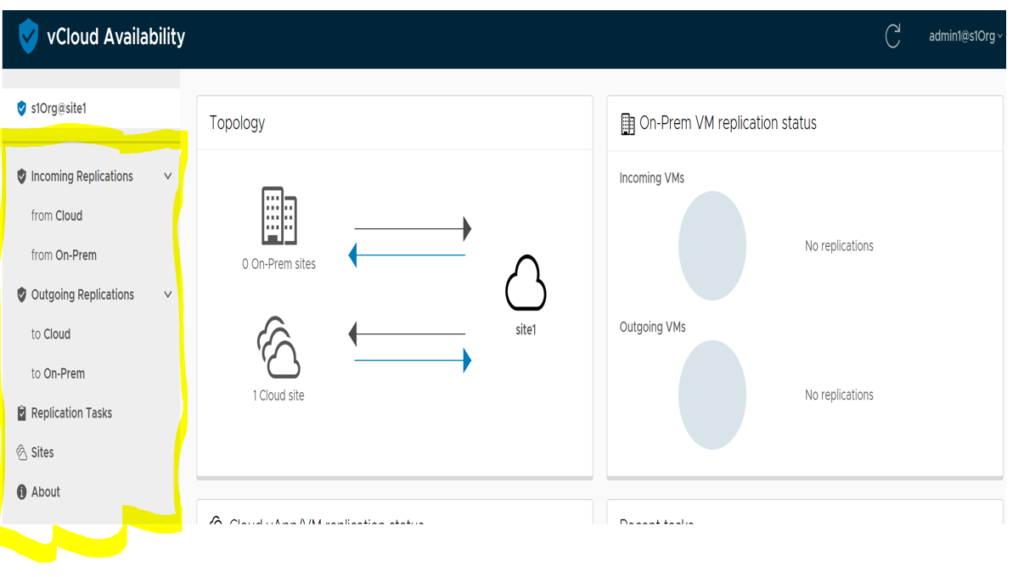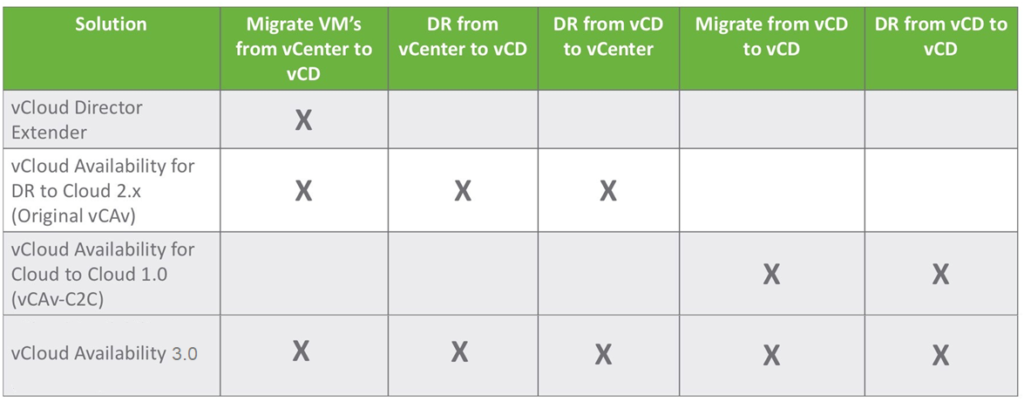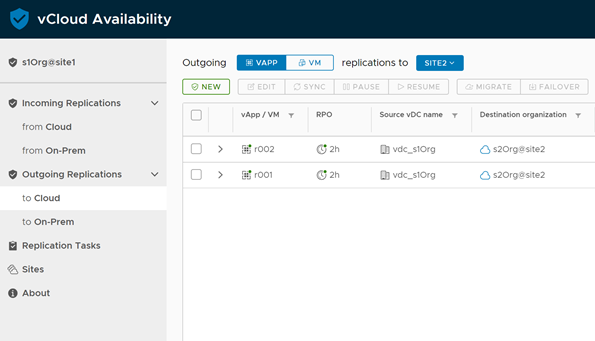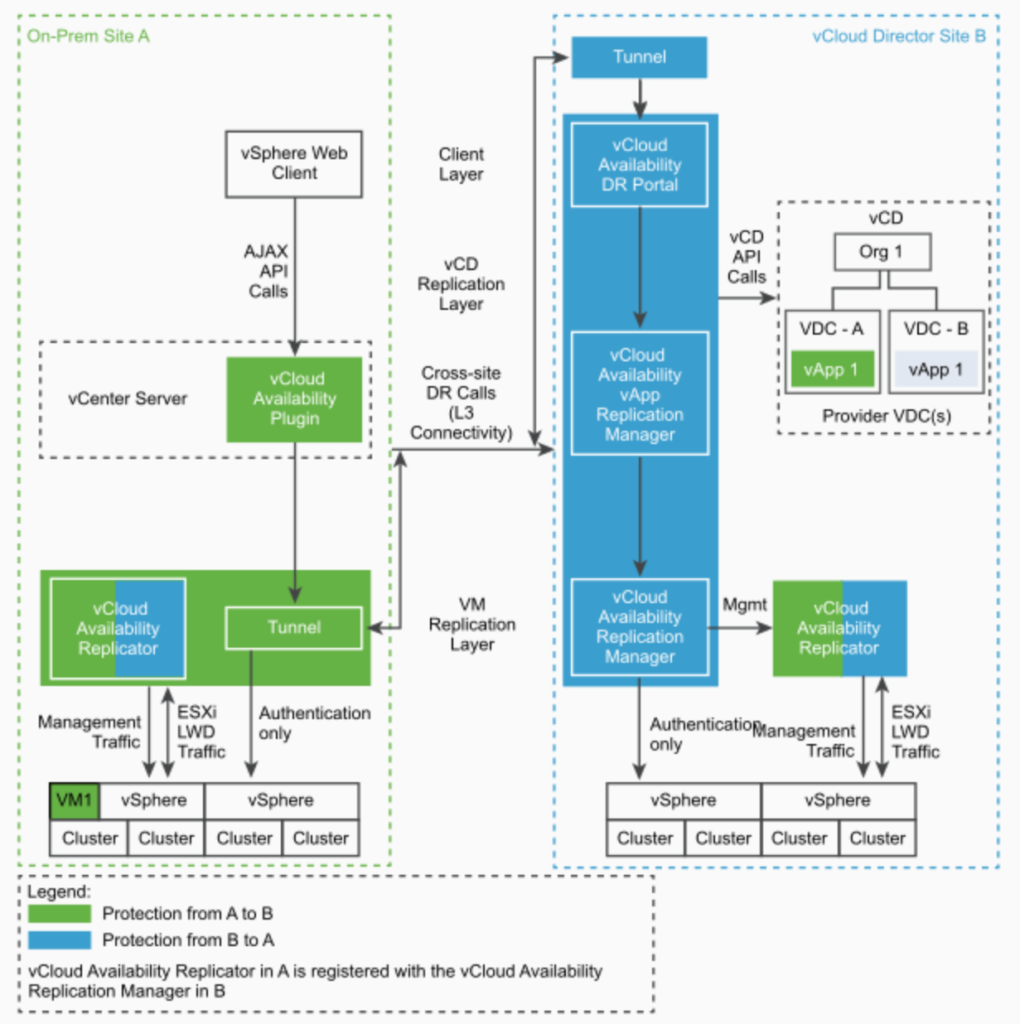The long waited VMware vCloud Availability 3.0 will be released soon, so I thought to share some update about the exciting set of features of what’s coming. If you have been following up the evolution of VMware vCloud Availability, you will find many of your wishes and requests are materializing in vCAv 3.0.
VMware vCloud Availability 3.0 solution introduces a new and simplified product architecture for replication, disaster recovery and migration capabilities into a single product. With the service you can perform:
- Migration and Disaster Recovery of VMs from on-premise vCenter Server to a vCloud site.
- Migration of vApps and VMs between two Virtual Data Centers that belong to a single vCloud Director Organization.
- Replication and recovery of vApps and VMs between vCloud Director sites.

VMware vCloud Availability (vCAv) 3.0 is combining the features of originally three different products, as shown in the below table. It is replacing all of vCloud Director Extender, vCloud Availability for DR to Cloud, and vCloud Availability for Cloud to Cloud.

vCloud Availability 3.0 capabilities:
- Management and monitoring of replications from on-premise vCenter Server to vCloud Director site.
- Capability to migrate and failover workloads from on-premise vCenter Server to vCloud Director site.

- Capability to failback recovered workloads from vCloud Director site to on-premise vCenter Server site.
- New vSphere Web Client plug-in (in addition to vCloud Director Tenant Portal) for on-premise vSphere users to initiate protection and failover.
- Management and monitoring of replications from one Virtual Data Center to another Virtual Data Center in the same vCloud Director Organization.
- Cross-site management and monitoring of replications between different vCloud Director sites.
- For supported VM and vApp operations in vCloud Availability 3.0, see the vCloud Availability vApp Replication Manager Replication Operations with Required Sessions table.
- The vCloud Availability DR solution provides replication and failover capabilities for vCloud Director and vCenter Server workloads at both VM and vApp level.
- Self-service protection and failover workflows per virtual machine (VM).
- Single installation package as a Photon-based virtual appliance.
- The capability of each deployment to serve as both source and recovery vCloud Director instance (site). There are no dedicated source and destination sites.
- Symmetrical replication flow that can be started from either the source or the recovery vCloud Director site.
- Replication and recovery of vApps and VMs between vCloud Director sites.
- Using a single-site vCloud Availability for Cloud-to-Cloud DR installation, you can migrate vApps and VMs between Virtual Data Centers that belong to a single vCloud Director Organization.
- Secure Tunneling through a TCP proxy.
- Integration with existing vSphere environments.
- Multi-tenant support.
- Built-in encryption or encryption and compression of replication traffic.
- Support for multiple vCenter Server and ESXi versions.
- Support for Clustered Datastores with co-existence with SDRS
- Edge Cluster support
- Version support for vCD 8.20 onwards
For those interested in the new architecture of vCloud Availability, let’s look at both Proof of Concept architecture as well production architecture of both Cloud to Cloud setup as well On-Prem to Cloud Architecture.
vCloud Availability Cloud to Cloud DR Architecture:
The components with no color in the following diagrams represent existing components in the vCloud Director environments. The remaining colored cells represent vCloud Availability for Cloud-to-Cloud DR services that you deploy during vCloud Availability for Cloud-to-Cloud DR Installation and Configuration procedures.
For test and development purposes, you can employ the simplest architecture where all three vCloud Availability for Cloud-to-Cloud DR services are deployed and configured on a single appliance.

For production deployments, you deploy and configure a single appliance that hosts the vCloud Availability for Cloud-to-Cloud DR portal, vCloud Availability vApp Replication Manager, and vCloud Availability Replication Manager services. You deploy and configure dedicated vCloud Availability Replicator appliance or appliances.

vCloud Availability On-Premises to Cloud DR Architecture:
On-premises deployment architecture requires vCloud Availability Tunnel service. To successfully deploy the tunneling service, service providers must restart all vCloud Availability services to enable them to work with the tunneling agent.
For test and development purposes, as the service provider, you can employ the simplest architecture where all vCloud Availability DR services, including thevCloud Availability Tunnel, are deployed and configured on a single appliance in the cloud. In the on-premises site, as the vSphere admin, you deploy and configure a single on-premises appliance employing a vCloud Availability Replicator and a vCloud Availability Tunnel. The components with no color in the following diagrams represent existing components in the vCloud Director and on-prem environments. The remaining colored cells represent vCloud Availability DR services that you deploy during vCloud Availability DR Installation and Configuration procedures.

For production deployments, on the cloud site B as the service provider, you deploy and configure a single appliance that hosts the vCloud Availability DR portal,vCloud Availability Tunnel, vCloud Availability vApp Replication Manager, and vCloud Availability Replication Manager services. You deploy and configure dedicated vCloud Availability Replicator appliance. In the on-premises site A as the vSphere admin, you deploy and configure a single on-prem appliance that hosts a vCloud Availability Replicator and a vCloud Availability Tunnel.

Sources: